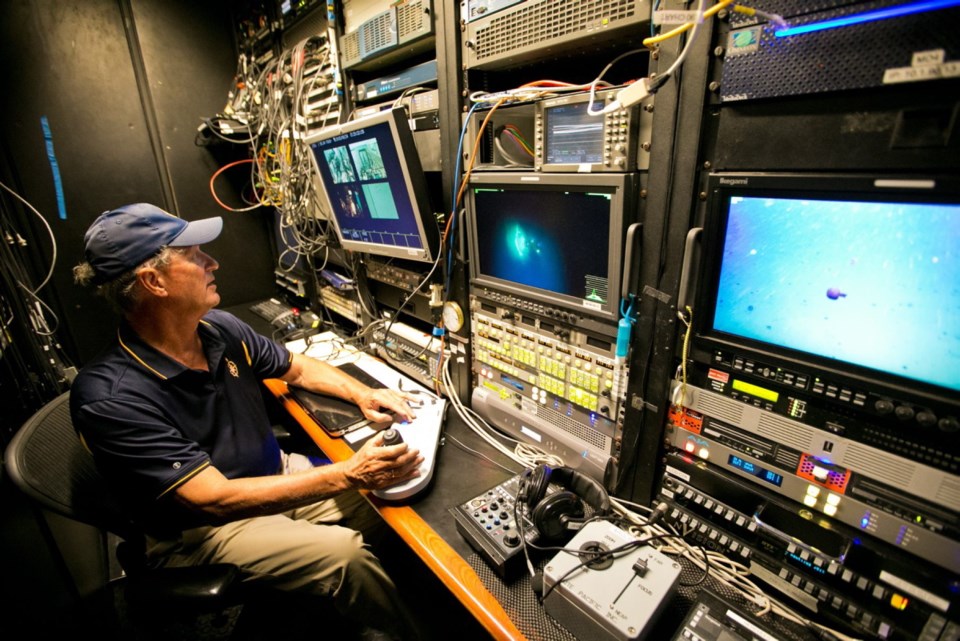The man credited with finding the wreck of the Titanic in 1985 is providing his research vessel for an expedition to benefit the renowned underwater laboratory systems run by University of Victoria -based Ocean Networks Canada.
Robert Ballard knows ONC president Kate Moran from their days together at the University of Rhode Island, so he was happy to have the ship Nautilus, with all of its specialized equipment, put to good use by his friend. He said he will keep a close eye on the trip from his computers at home in Connecticut.
The Nautilus, owned by Ballard’s Ocean Exploration Trust, sets out from Victoria today and will soon join up with another research vessel, the Thomas G. Thompson, from the University of Washington. Both have robotic vehicles that can transmit real-time video from deep in the ocean, and both will be involved in servicing ONC’s two main systems — NEPTUNE and VENUS.
NEPTUNE extends into the Pacific Ocean and VENUS goes from Saanich Inlet into the Salish Sea, while another system has also been established in the Arctic. VENUS was established in 2006, NEPTUNE in 2009 and the Arctic system in 2012.
All of the systems are made up of arrays of cables that connect equipment able to compile data with application to fisheries, marine traffic, earthquakes, tsunamis and more.
More than $200 million has gone into the project, much of it from the federal government. Funding has also come from the provincial government and a number of other sources.
Ballard won’t be on the ONC voyage, but was on the Nautilus on Monday talking about the work his ship can do. He said that even with the tasks to be done by ONC, Nautilus has other things to accomplish, as well.
“We’re always exploring,” he said from the ship’s studio area, complete with monitors that comb ocean activity. “When we do it we’re running this ship like the emergency room of a hospital. We have no idea what’s going to come before our cameras.”
If something is seen, perhaps an undersea mountain range that could be a new find, a network of scientists can be informed, Ballard said.
“The point is that we can reach out anywhere.”
Bringing in organizations such as ONC is also a priority, he said.
“Kate will be flanked by teachers and educators,” Ballard said. “We bring out a huge number of scientists, students, all levels of the educational system.”
Moran said the effort to maintain and examine NEPTUNE and VENUS has to happen on a regular basis.
“Unlike space exploration, it’s really hard to keep sensors in the ocean,” she said. “It’s just because it’s high pressure, a wide range of temperature and we’re in a corrosive environment.”
She said the robotic vehicle on the Nautilus, known as Hercules, has arms that can be manipulated from the surface to do a variety of tasks. She said scientists from around the world can be contacted to offer advice for the precise moves that Hercules will make.
Having the use of Ballard’s Nautilus, one of only two such ships in the world, is “fantastic,” Moran said.
“He’s specially built this for exactly what we do — connecting what we do on the sea floor with our scientific community.”
The public can tune in during the voyage at nautilus.org or oceannetworks.ca, Moran said.



